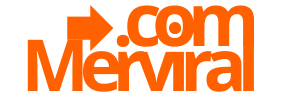Crafting a Financial Future: Top Budgeting Apps for Beginners in 2025
The financial landscape in 2025 demands proactive money management, especially for those just starting their journey toward fiscal responsibility. Fortunately, a plethora of budgeting apps exist, offering user-friendly interfaces and powerful features to help beginners gain control of their finances. Navigating this expansive market requires careful consideration, focusing on ease of use, functionality, and alignment with individual financial goals. Here, we dissect some of the best budgeting apps slated to empower beginners in 2025, examining their strengths, weaknesses, and suitability for diverse needs.
1. Mint: The All-Encompassing Financial Hub
Mint, a long-standing player in the budgeting app arena, remains a strong contender for beginners in 2025. Its primary appeal lies in its aggregation capabilities, automatically linking to bank accounts, credit cards, investment accounts, and even loan providers. This centralized view provides a comprehensive snapshot of your financial health, eliminating the need to juggle multiple platforms.
-
Key Features: Automatic transaction categorization, bill tracking and reminders, credit score monitoring (powered by TransUnion), goal setting (e.g., saving for a down payment), investment tracking, and personalized financial insights. Mint utilizes AI-powered algorithms to analyze spending patterns, suggesting potential areas for savings. Furthermore, it offers customizable budgeting categories and subcategories to fine-tune expense tracking.
-
Pros: User-friendly interface, free to use, robust feature set, automatic data syncing, bill payment reminders, and credit score tracking. The app’s intuitive design makes it easy for beginners to understand their finances quickly. The sheer breadth of features makes it an all-in-one solution for managing various aspects of personal finance.
-
Cons: Can be overwhelming for some users due to its vast functionality. Concerns about data privacy (although Mint employs robust security measures) may deter some users. The reliance on Plaid for bank connectivity can occasionally lead to syncing issues. Advertising, while non-intrusive, is present within the app. The automated categorization, while generally accurate, sometimes requires manual adjustments.
2. YNAB (You Need A Budget): The Envelope System Reimagined
YNAB differentiates itself by advocating a proactive budgeting philosophy based on the envelope system. It encourages users to assign every dollar a purpose, promoting mindful spending and preventing overspending. While not free, YNAB’s subscription fee is often offset by the potential savings achieved through its disciplined approach.
-
Key Features: Four Rules methodology (Give Every Dollar a Job, Embrace Your True Expenses, Roll with the Punches, Age Your Money), real-time budget tracking, goal setting, reporting and analysis, debt management tools, and online and mobile access. YNAB emphasizes living within your means and prioritizing essential expenses. The “Age Your Money” rule encourages building a buffer to reduce financial stress.
-
Pros: Powerful budgeting methodology, excellent reporting and analysis tools, strong community support, designed to promote financial discipline, and focuses on long-term financial planning. The emphasis on assigning every dollar a purpose fosters a deeper understanding of where money is going. The reporting features provide valuable insights into spending habits and progress toward financial goals.
-
Cons: Subscription fee may be a barrier for some beginners. Steeper learning curve compared to simpler apps. Requires manual input of transactions (although bank syncing is available in some regions). The proactive budgeting approach requires commitment and ongoing effort.
3. PocketGuard: Simplified Spending and Savings
PocketGuard focuses on simplicity and clarity, providing a straightforward overview of available spending money after accounting for bills, expenses, and savings goals. It’s ideal for beginners who want a quick and easy way to track their spending and stay within their budget.
-
Key Features: Simple budget tracking, bill tracking, automatic savings goal calculations, “In My Pocket” feature (shows available spending money), and bank account syncing. PocketGuard simplifies the budgeting process by focusing on the core elements: income, bills, savings goals, and available spending money. The “In My Pocket” feature provides a real-time snapshot of how much money is available to spend.
-
Pros: Very user-friendly and intuitive interface, easy to set up and use, focuses on core budgeting principles, helps avoid overspending, and offers a free version with essential features. The simplicity makes it an excellent choice for beginners who are intimidated by more complex budgeting apps.
-
Cons: Limited customization options, fewer advanced features compared to Mint and YNAB, relies heavily on bank syncing, and the free version has some limitations. The lack of customization may be a drawback for users who want more control over their budgeting categories.
4. Personal Capital: Investment Focus with Budgeting Features
While primarily known for its investment management platform, Personal Capital offers robust budgeting tools as well. It’s best suited for beginners who are also interested in tracking their investments and net worth.
-
Key Features: Net worth tracking, investment performance analysis, retirement planning tools, budget tracking, cash flow analysis, and fee analyzer. Personal Capital provides a comprehensive view of your financial picture, including investments, assets, and liabilities. The retirement planning tools help users project their future financial needs.
-
Pros: Excellent investment tracking and analysis tools, free budgeting features, comprehensive financial overview, and retirement planning capabilities. The investment focus sets it apart from other budgeting apps. The ability to track net worth provides a valuable measure of financial progress.
-
Cons: Budgeting features are not as robust as dedicated budgeting apps, primarily geared toward users with investments, and can be overwhelming for users solely focused on budgeting. The budgeting features are somewhat secondary to the investment management platform.
5. Goodbudget: Modern Envelope Budgeting with Shared Access
Goodbudget is another envelope budgeting app that offers a unique feature: shared access for couples or families. It allows multiple users to collaborate on a budget and track spending together.
-
Key Features: Digital envelope budgeting, shared access for multiple users, debt tracking, goal setting, and online and mobile access. Goodbudget replicates the traditional envelope system in a digital format, making it easy to allocate funds to different categories. The shared access feature is ideal for couples or families who want to manage their finances together.
-
Pros: Excellent for collaborative budgeting, promotes financial transparency, helps manage debt, and offers a free version with limited envelopes. The shared access feature fosters communication and accountability among users.
-
Cons: Requires manual input of transactions, the free version is limited to a small number of envelopes, and the interface is not as visually appealing as some other apps. The manual input of transactions can be time-consuming.
Selecting the Right App:
Choosing the best budgeting app ultimately depends on individual needs and preferences. Consider the following factors:
- Budgeting Style: Do you prefer a proactive envelope budgeting approach (YNAB, Goodbudget) or a more passive tracking approach (Mint, PocketGuard)?
- Financial Goals: Are you primarily focused on budgeting, or are you also interested in investment tracking and retirement planning (Personal Capital)?
- Technical Proficiency: Are you comfortable with complex features and settings, or do you prefer a simpler, more intuitive interface?
- Price: Are you willing to pay a subscription fee for a premium budgeting app, or do you prefer a free option?
By carefully evaluating your needs and comparing the features and benefits of different budgeting apps, you can find the perfect tool to help you achieve your financial goals in 2025 and beyond. Remember that the app is only a tool; consistent effort and disciplined financial habits are essential for long-term success.

